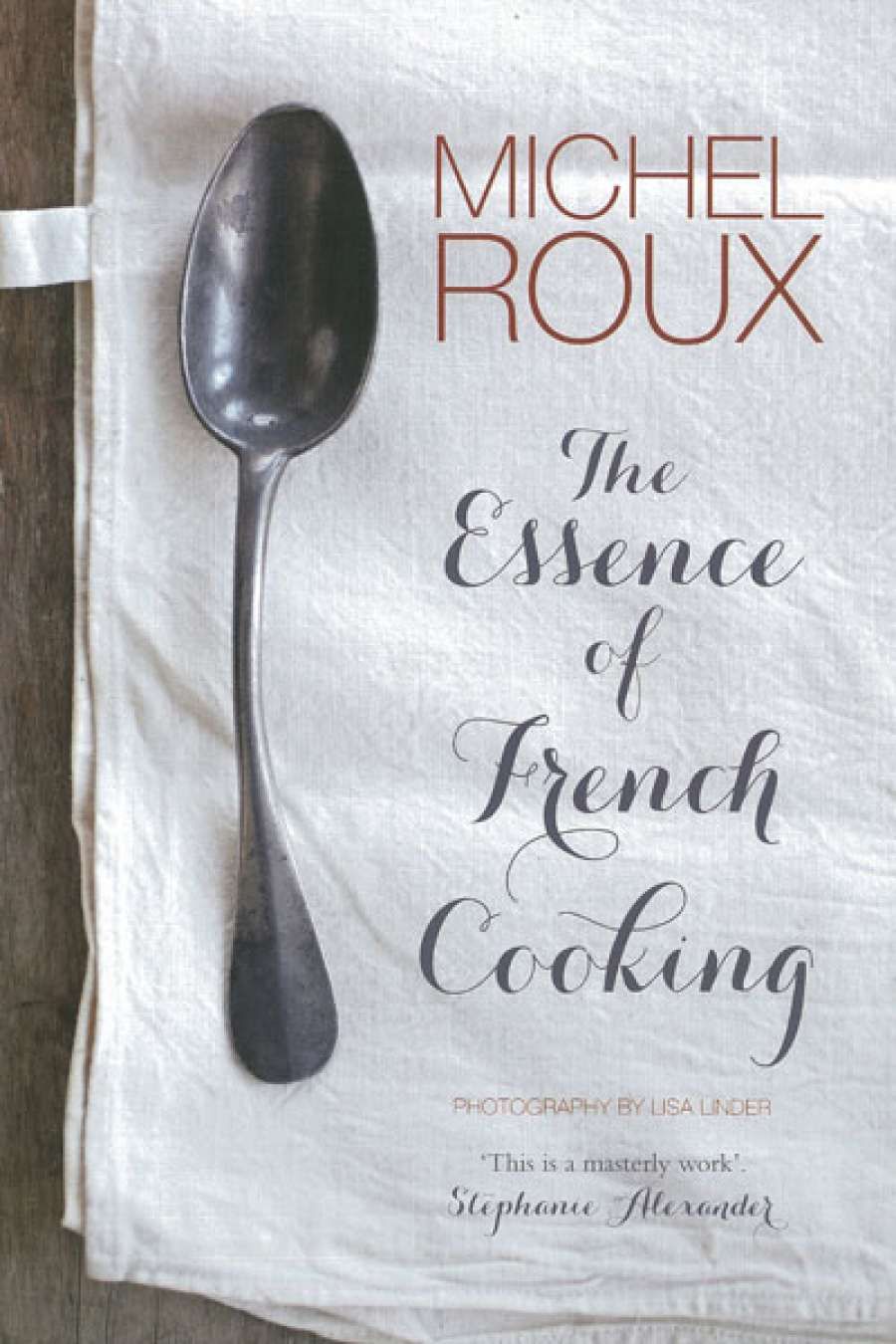
- Free Article: No
- Contents Category: Food
- Custom Article Title: Christopher Menz reviews 'The Essence of French Cooking' by Michel Roux and 'The Best of Gretta Anna with Martin Teplitzky' by Gretta Anna Teplitzky and Martin Teplitzky
- Book 1 Title: The Essence of French Cooking
- Book 1 Biblio: Lantern, $59.95 hb, 272 pp, 9781921384141
- Book 2 Title: The Best of Gretta Anna with Martin Teplitzky
- Book 2 Biblio: Lantern, $49.95 hb, 296 pp, 9781921383656
Gretta Anna Teplitzky, who died in 2010, is well known to a generation of Australian cooks because of her cookery school in Sydney and through her acclaimed cookery books. Born in New Zealand, she came to Australia with her husband, David Teplitzky, in 1958. Her passion for cooking led her to set up a cookery school, initially in their Rose Bay flat. In the three decades that she ran her school – eventually from their modernist Harry Seidler house in Wharoonga – more than 35,000 women passed through the doors. (We also learn Albert Roux was one of the many famous French chefs she befriended during her career.) In what must be one of the worst judgements in Australian cookery publishing, the manuscript of what became The Gretta Anna Recipes (1978) was rejected by several commercial publishers. The Teplitzkys published it themselves, and the book has now sold more than a quarter of a million copies. Their son Martin Teplitzky – a chef with an international career who was first apprenticed at Berowra Waters Inn, aged sixteen – has compiled this selection of his mother's recipes and added sixty of his own.
This being chestnut time, I was instantly lured to Michel Roux and Cream of Chestnut Soup, a most elegant version combining chestnuts with chicken stock enlivened with touches of shallots, celeriac, sparkling wine, cream, and milk, which give it a wonderful and complex flavour and texture. I did not have the same success with Roux's version of Chestnut Mont-Blanc. I am not sure if this was because of the way I cooked the chestnuts or if they were tougher or inferior this year. The result, while tasting fine, lacked the finesse normally achieved in other versions of this classic. Next time I go to the trouble of shelling and peeling chestnuts, I will stick to Mme Saint-Ange's 1927 version in La bonne cuisine de Madame E. Saint-Ange, of which there is an excellent English edition. Another Roux dish that worked well is his Casserole of Monkfish, in which a firm white fish is cooked with red peppers, onions, lardons of smoked bacon, and mangetout (or snowpeas). I substituted rockling for monkfish and used kaiser-fleisch for bacon, and this was a triumphant balance of flavours and texture.
Roux's Coq au Vin has a couple of variations from the many other published versions of this classic that make it well worth the effort: the chicken is marinated in the wine for a day; he uses half a head of garlic; black pudding is added at the end to enrich the sauce in lieu of hard-to-find cockerel blood; lemon juice is added to cut the richness. Martin Teplitzky's book has two versions of this cliché of French cuisine: one his (Coq au Vin Rouge) and one his mother's (Coq au Vin Blanc). All three recipes offer different approaches and cooking methods. The Australian versions certainly make lighter and healthier eating.
 Martin Teplitzky
Martin Teplitzky
Another dish that was a great success was Teplitzky's Roast Duck with Rice & Hazelnut Stuffing. The stuffing included both wild and brown rice and was flavoured with chives, thyme, sage, and parsley. In flavour and texture, it formed a marvellous companion to the duck. Similarly, his Bistro Baked Apples brought together arresting flavours and textures with additions of citrus and dried fruit.
Both books are introduced by the author. Roux gives an overview of the superlative produce found in France. Clearly, no other country in the world matches the quality of French produce. Roux imports ducks from France for his English restaurant. Teplitzky gives a charming and heartfelt account in a volume that forms an impressive memorial to his mother. What is refreshing about both writers is that nothing is presented as a definitive recipe: each offers suggestions and alternatives. In this way we are encouraged to experiment, to adapt, and to make their recipes our own.


Comments powered by CComment